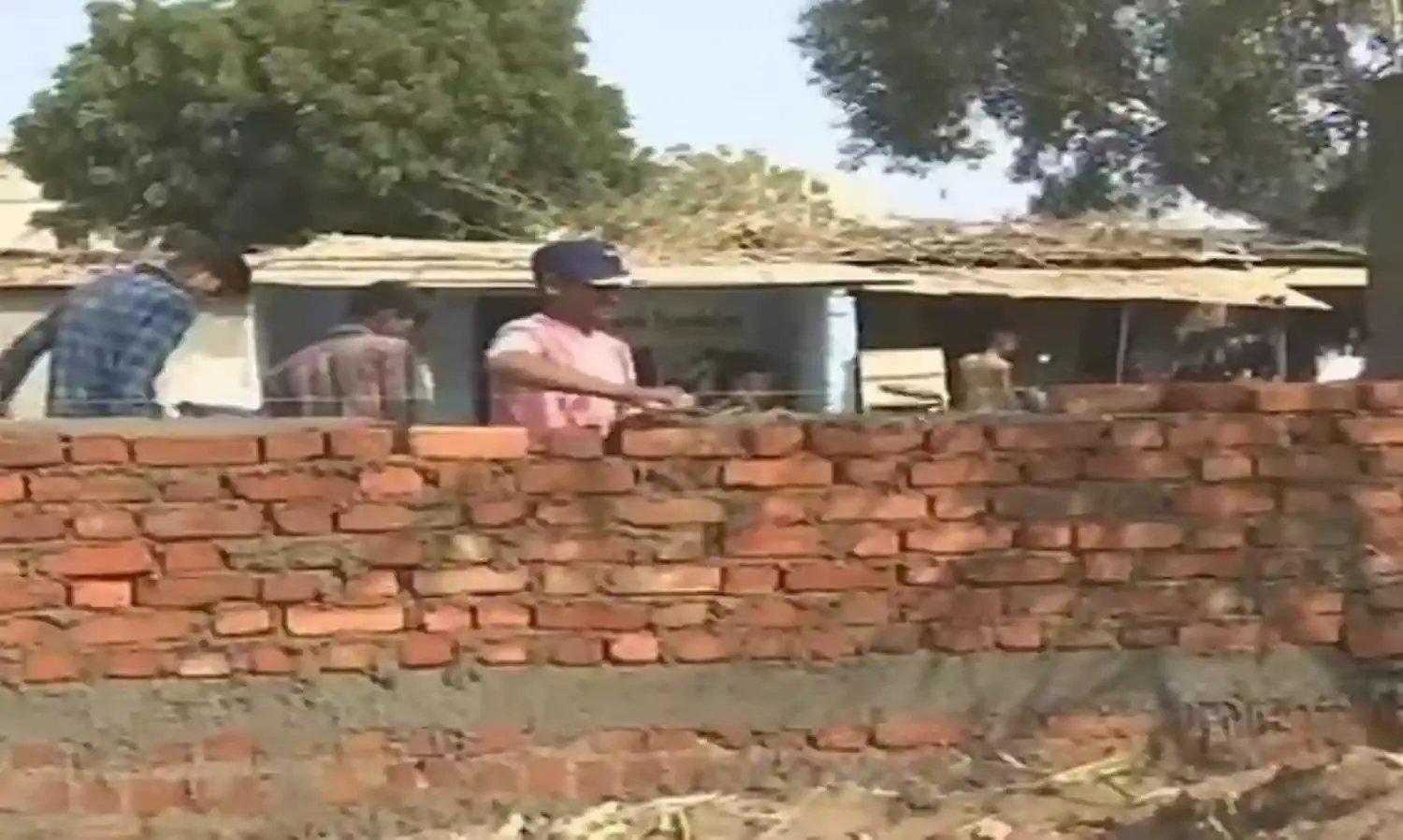Garibi Chupao! Modi’s Trump Wall Points to Class Apartheid of Gujarat Model
Building a wall to hide poverty indicates many failures - but not to these leaders

When it comes to building walls, whether between the American and Mexican border to check infiltration, or to hide the Indian poor in the model state of Gujarat, the phenomenon boils down to class disparity. The building of a wall between the Ahmedabad airport and Indira Bridge in Gujarat’s biggest city, allegedly to hide the poor from the view of US President Donald Trump and his wife Melania when they come visiting later this month, has been making the headlines.
Officials’ explanations that the reported 600 metre wall is being built to check “encroachment” and is part of a repairs exercise do not seem to have cut ice with people, who are raising several pertinent questions that have cornered the government under Prime Minister Narendra Modi who graduated from the office of Gujarat Chief Minister in 2014.
The wall is being defined in the context of class, with people pointing out that building such a wall to hide poverty is nothing but the blowing up of the much touted Gujarat Model of development.
People are saying that Indian politics has graduated, from ‘Garibi hatao’ (Remove poverty) in Indira Gandhi’s times to ‘Garibi chupao’ (Hide poverty) almost five decades later.
On a serious note, the construction of the wall symbolises the failure of the ruling class in Gujarat, which has been among the most developed economically.
“It is a slum where people from the Sharaniya community reside that the authorities are trying to hide from Trump’s gaze. These people are in the vocation of making and selling brooms. They were nomadic and have been living on this piece of land for some years.
“By making a wall you are conveying that you are yourself ashamed of the government’s inability to provide them basic humane living. You are conveying that only the rich and the middle classes matter to you. It is a matter of shame that people live in such conditions in slums like Sharaniyavas, in a state that is peddled as a model state for others to follow,” says Dakxin Chhara, a cultural and social activist hailing from the de-notified Chhara tribe.
“It boils down to the fact that you do not want to even acknowledge the fact that there are poor and marginalised people living in Gujarat. What you are spending on the wall should have been spent in providing basics to the poor. It shows what the priorities of the government are,” Chhara tells The Citizen.
Poet, writer and social observer Paresh Vyas gives a socio-historical dimension to the erection of the wall. “Ahmedabad has had an old association with walls and darwazas (gates). While the first symbolises exclusion by blocking, the latter symbolises inclusion through the opening of doors.
“The city has 12 darwazas. Ahmedabad’s folklore has many anecdotes conveying that whenever the rich and mighty have tried to build walls segregating the poor and marginalised, public unrest has compelled them to build darwazas.
“There is a story about Manek Nath, after whom the famous food court of Manek Chowk thrives late into the night. It is said that each time he added a stitch to the quilt he was sewing, a portion of the wall being erected by the ruler around the city would crumble,” says Vyas.
“But the erection of walls and attempts to exclude the poor never stopped. Just a little more than a decade back the authorities erected a boundary around the historic Kankaria Lake, and now everyone has to purchase a ticket for a view of the lake by entering the ‘beautified’ complex. Is this not exclusion of the poor?” he asks.
But this is the model of governance being promoted.
This is not the first time the government has tried to hide the poor from visiting dignitaries. This reporter was first to highlight the slums adjacent to the Mahatma Gandhi’s Sabarmati Ashram in Vadaj locality being covered with huge reams of green jute fabric when Chinese premier Xi Jinping came visiting in September 2014.
An official quipped at the time, “Jab garib dikhega hi nahin to garibi kahan rahegi?” (When you can’t see the poor, how will poverty remain?)
Ahmedabad residents who are proud of their city and its heritage are scoffing at Trump’s being taken to the renovated Motera Stadium for an event on the lines of the Howdy, Modi! spectacle held in Texas last year.
Residents say the government is keen to take visitors to venues that are symbolic, less populated and in the new Ahmedabad, marked by its own understanding of development that revolves only around buildings and roads, whereas the real soul of Ahmedabad resides in its old mills, the heritage contributed mainly by Muslim rulers like the 12 darwazas, Sidi Syed’s Jaali carved in limestone, the ancient Jama Masjid, the Sarkhez Roza etc.
They say it is this heritage that earned Ahmedabad the tag of a UNESCO World Heritage City. But those wedded to the Hindutva ideology abhor anything related to Muslims; things are so bad that their leaders even refrain from taking the name Ahmedabad, calling it Karnavati instead.
As Vyas says, “Motera Stadium is not heritage. It is the Rani Sipri’s mosque better known as Masjid-e-Nagina and Sarkhez Roza that is heritage.”
Veteran political commentator Prakash Shah told this reporter, “When it’s people like Modi and Trump in power, such walls do not come as a surprise. Does the government think that Trump would not know of the wall being built? But he will happily ignore it as he gets treated like an emperor.
“Leaders like these prefer living in a make-believe world, where they do not even acknowledge the existence of the poor. Who knows, Modi might tell Trump sarcastically, ‘I beat you in making the wall!’ For them it is only the rich and the middle classes that matter.”



